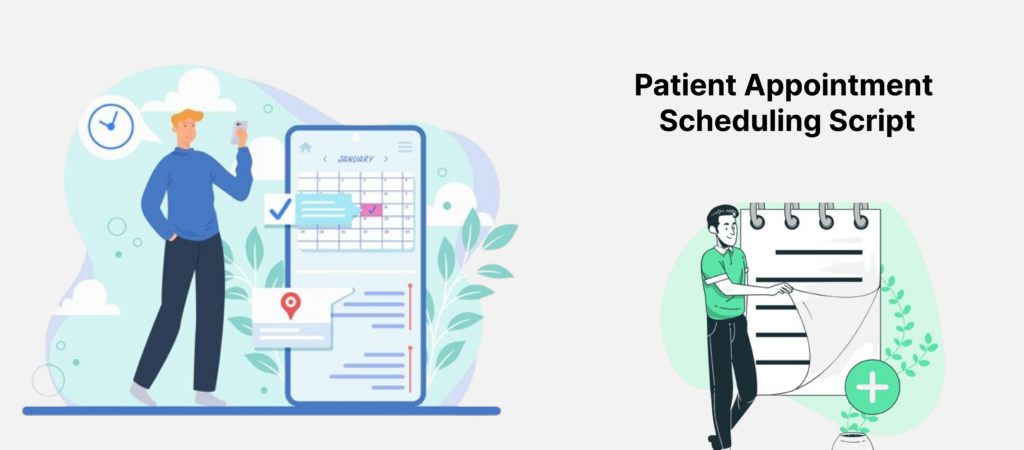
Navigating the healthcare system might feel like an obstacle course in the fast-paced world of today. Inconvenient appointment scheduling procedures, lengthy wait times, and forgotten reservations all aggravate patients and limit their access to care. Fortunately, scripts for scheduling patient appointments are becoming more and more effective tools for changing the way healthcare is delivered, providing a data-driven approach that benefits both patients and clinicians.
Scripts for scheduling patient appointments use data and technology to transform the reservation process.
Easy Self-Scheduling: Via mobile apps or easily navigable web portals, patients can easily make appointments any time of day or night. Integrated calendars guarantee seamless booking flows and remove scheduling conflicts.
Automated Reminders: By reminding patients about forthcoming visits, personalized email and SMS reminders help patients avoid missing appointments. This can result in a 40% decrease in no-show rates.
Two-Way Communication: The platform’s secure messaging tools let patients ask questions, reschedule appointments, and get updates from doctors directly, all of which promote educated participation.
Multi-lingual Support: Encouraging a wide range of users by providing the platform in several languages with breaks eliminates linguistic obstacles and guarantees fair access to healthcare.
Data-Based Perspectives: Important information about patient preferences, appointment patterns, and booking trends is recorded by the software. Providers can use this information to pinpoint peak times, streamline scheduling procedures, and efficiently distribute resources.
Convenience & Time-Saving: Patients who self-schedule can schedule appointments at times that work best for them, which cuts down on wait times and irritation.
Enhanced Control and Transparency: Messages confirming appointments and available in real-time inspire trust and facilitate transparent conversation.
Better Healthcare Experience: A more upbeat and patient-focused experience is made possible by shorter wait times and more efficient booking procedures.
Advantages for Suppliers:
Decreased Missed Appointments: Automated reminders and adaptable scheduling choices reduce the number of no-shows, increasing income and scheduling efficiency.
Optimized Operations: To increase operational efficiency, data-driven insights guide decisions about staffing, modifying appointment lengths, and allocating resources.
Improved Patient Engagement: Two-way communication helps patients get to know one another better, which improves treatment compliance and general health outcomes.
Advanced features further enhance the scheduling experience:
As technology develops further, the following interesting developments are possible:
Speech-Activated Booking: Just picture patients utilizing virtual assistants or smart speakers to simply make appointments by speaking speech commands.
Predictive Scheduling: By anticipating patient requirements and recommending appointments for preventive treatment, AI-powered algorithms can encourage proactive health management.
Blockchain Integration: Safe blockchain technology has the potential to improve data security and privacy while fostering openness and confidence in the healthcare industry.
Conclusion:
Scripts for scheduling patient appointments are transforming the healthcare industry by providing a data-driven method to expedite booking procedures, empower patients, and enhance provider operations. These scripts have the potential to significantly increase accessibility, further personalize healthcare experiences, and ultimately change healthcare delivery as technology develops. We can build an effective, patient-centered healthcare system that gives people the power to take charge of their health by adopting these creative solutions.